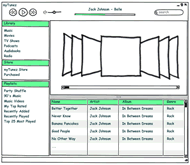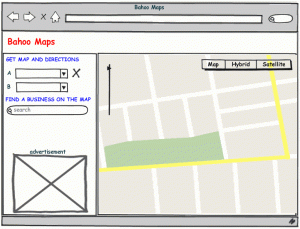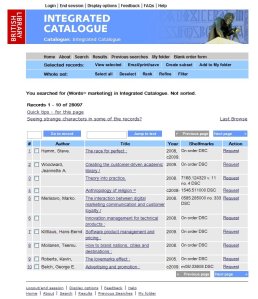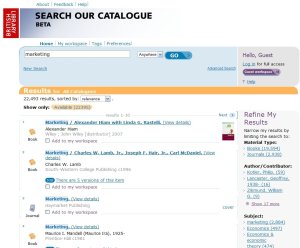 From the same people who produce Springwise the marvellous source of entrepreneurial ideas which I frequently blog about, comes Trendwatching‘s predictions of consumer trends for 2009.
From the same people who produce Springwise the marvellous source of entrepreneurial ideas which I frequently blog about, comes Trendwatching‘s predictions of consumer trends for 2009.
As always, they have invented an intriguing set of ‘new’ words to cover their predictions for the year ahead.
1. Nichetributes, which is about the power of making products and services relevant by incorporating ‘attributes’ and features that cater to distinct (if not niche) consumer lifestyles and situations.*
2. Luxyoury: On to every brand professional’s favorite topic (or so it seems at times): The Future of Luxury. How will luxury brands fare this year? What will define luxury over the next few years? The answer to a large degree is, ‘luxury will be whatever you want it to be’. After all, what constitutes luxury is closely related to what constitutes scarcity. And while scarcity in traditional consumer societies was for decades defined by the biggest, the best, and the most expensive ‘items’, the ‘2009 consumer arena’ shows a bewildering number of ‘scarcities’, some of them invented purely to overcome the abundance now found in traditional sectors. More than ever, scarcity is in the eye of the beholder, especially those beholders who are desperately trying to be unique.
3. Feeeback 3.0: Which major consumer trend will continue to give (or take?) in novel ways in the next 12 months? Try TRANSPARENCY TYRANNY. Big in 2007, bigger in 2008, and even bigger this year. To get a feel for all transparency sub-trends, get your hands on our 2009 Trend Report (not free), but for now, let’s focus on FEEDBACK 3.0, which is one of the trends-within-a-trend that is starting to make waves. Basically:
* FEEDBACK 1.0 (one of those early web phenomena) saw outraged individuals posting scathing reviews, feedback and complaints, often to the delight of other netizens. Brands remained unaware or chose not to listen, dismissing these outbursts the way they’d dismissed any kind of customer dissatisfaction for decades.
* FEEDBACK 2.0 (which we’re in right now) is about these rants—and some raves—having gone ‘mass’(no, make that MASS!). The long-predicted conversation is finally taking place, albeit amongst consumers and not, as intended, between corporations and consumers. Companies have started to take note, but to a large degree still choose to listen, not talk back, trying to ‘learn’ from the for-all-to-see review revolution. Which is surprising, to say the least, since a quick and honest reply or solution can defuse even the most damaging complaint.
* FEEDBACK 3.0 (which is building as we speak) will be all about companies joining the conversation, if only to get their side of the story in front of the mass audience that now scans reviews. Expect smart companies to be increasingly able (and to increasingly demand) to post their apologies and solutions, preferably directly alongside reviews from unhappy customers. Expect the same for candid rebuttals by companies who feel (and can prove) that a particular review is unfair or inaccurate, and want to share their side of the story.
4. Econcierge: No, there will be no ‘eco fatigue’ in 2009, mainly because it’s hard to ignore or to dismiss the mind-boggling fortunes (and the accompanying power shifts and reductions in pollution) that are in store for those who figure out how to get the world off its addiction to oil and coal. Which means a steady stream of eco sub-trends. While we hope the likes of ECO-EMBEDDED and ECO-ICONIC are now firmly on your radar, here’s one more to start the new year with fresh, green brainstorming inspiration:
ECONCIERGES are firms and services dedicated to helping households go green in any possible way. And while any advice that reduces a household’s (harmful) consumption is beneficial enough, the fact that such advice leads to savings makes this a very 2009 development. In the coming 12 months, count on cash-strapped consumers to embrace sustainability with a vengeance, but first and foremost for monetary reasons. Next? How about helping consumers to make money by being green, by for example letting them generate and sell excess power to the ‘grid’?
5. Mapmania: Will this year be the year in which all things ‘contextual’, ‘app’, ‘local’, ‘urban’, ‘tags’, ‘lidar’, ‘smartphone’, ‘convenience’, ‘Cell ID’, ‘spontaneity’, ‘infolust’, and ‘GPS’ finally come together in one orgasmic celebration of map-based tracking, finding, knowing and connecting? Embraced by eager consumer masses who will flock to anything from friend-finders to lowest-gas-price-locators? Aided by services that already know which street users are on?
6. Happyending: The umbrella trend for the next 12 months? HAPPY ENDING!
2009 is an excellent year for those businesses keen on showing consumers that they really care. Much more on ‘caring’ in our upcoming February 2009 Trend Briefing, which will focus on GENERATION G, but for now: offering respect and relevance (NICHETRIBUTES), listening to real-time needs and wants (FEEDBACK 3.0), helping people to save money while being green (ECONCIERGE): all of this will not be forgotten by consumers that are currently feeling the heat.

 I listened to a fascinating discussion on In Business on Radio 4 recently with Professor James Boyle of Duke Law School.
I listened to a fascinating discussion on In Business on Radio 4 recently with Professor James Boyle of Duke Law School.
 No, it’s not some magic piece of mobile communication technology, instead it’s a free little widget downloaded from the
No, it’s not some magic piece of mobile communication technology, instead it’s a free little widget downloaded from the  From the same people who produce
From the same people who produce 




 Many of the clients I see understand the power and importance of marketing their product or service through the world wide web. However, very few of them have the knowledge, technical skills and creative flair to be able to produce a professional website. In quite a few cases they have been worried about how to explain to a professional website designer what they are trying to achieve.
Many of the clients I see understand the power and importance of marketing their product or service through the world wide web. However, very few of them have the knowledge, technical skills and creative flair to be able to produce a professional website. In quite a few cases they have been worried about how to explain to a professional website designer what they are trying to achieve.





